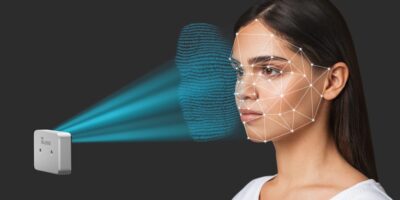Intel RealSense ID processes images locally and encrypts for privacy
Privacy was a top priority in the design of the Intel RealSense ID facial authentication, explains the company at its launch.
Intel RealSense ID combines an active depth sensor with a specialised neural network designed to deliver secure, accurate and user-aware facial authentication. It was designed and built specifically for user protection and processes all facial images locally and encrypts all user data, explains the company.
Intel RealSense ID works with various access systems, including smart locks, access control, point of sale sites, ATMs and kiosks.
“Intel RealSense ID combines purpose-built hardware and software with a dedicated neural network designed to deliver a secure facial authentication platform that users can trust,” explained Sagi Ben Moshe, Intel corporate vice president and general manager of Emerging Growth and Incubation.
No network set up is required and enrolment is simple, says Intel, for accurate, natural facial authentication to simplify secure entry. Using only a glance, users are able to quickly unlock what’s important to them. Intel RealSense ID combines active depth with a specialised neural network, a dedicated SoC and embedded secure element to encrypt and process user data quickly and safely.
To ensure continued ease of use, Intel RealSense ID also adapts to users over time as they change physical features, such as facial hair and glasses. The system works in various lighting conditions for people with a wide range of heights or complexions, reassures Intel.
It has been developed because traditional authentication methods leave users vulnerable to ID theft and security breaches. Companies and individuals are turning to facial authentication technology to meet the highest levels of security and privacy.
Suitable for use in finance, healthcare and smart access control, Intel RealSense ID has built-in anti-spoofing technology to protect against false entry attempts using photographs, videos or masks. It also provides a one-in-1-million false acceptance rate.
To protect user’s privacy, Intel RealSense ID processes all facial images locally and encrypts all user data. It is also only activated through user awareness and will not authenticate unless prompted by a pre-registered user.




